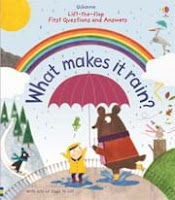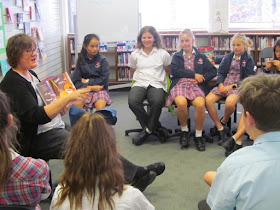An exemplary model of practice in the essential teaching of and exposure to reading in both primary and secondary school, and sources of inspiration in keeping reading ever fresh and new…
Learning to read is a fundamental part of every child’s education, but helping children develop a desire to read and laying the foundations of a life-long reading habit are arguably just as important. As Ray Bradbury is often quoted as saying “You don’t have to burn books to destroy a culture. Just get people to stop reading them.” (Brainyquotes 2018)
So how do we encourage our students to read because they want to, not because they’re forced to?
One strategy is to allow them, within reason, to read what they want to. Stephen Krashen and Joanne Ujuiie (2005) tell us “Junk food is bad for you. Junk reading is good for you”, and Krashen (2015, p. 2) makes a compelling case that “Free voluntary… self-selected reading, generally fiction, of material of great interest to the reader...does not bring the reader to the highest levels of literacy development, but it provides the competence and knowledge that makes reading at the next stage more comprehensible.”
Another way is to help them see what choices they have by keeping books and reading visible. We can immerse them in a print-rich environment, hold book-related events and celebrations, host author visits, promote different genres, regularly read aloud to them, and make book reviews and recommendations easy to find.
The third element, of vital importance, is giving them time to read for pleasure, by ensuring that a class-based, sustained silent reading time is included as an essential part of every school day. Jim Trelease (2013), author of the bestselling Read Aloud Handbook, highlights the value of volume in the reading equation (p. 27). “The more you read, the better you get, the better you get, the more you like it; and the more you like it, the more you do it”.
We can be vocal in highlighting the importance of daily sustained silent reading in developing the next generation of readers and deep thinkers. We can strive to provide our students with as large and wide a range of reading resources as our budgets will allow. We can help keep class teachers up-to-date on what is available so they can use their knowledge of individual students’ interests to match them with books they are most likely to want to read. We can let our students see how much we value reading by sitting and reading our own book alongside them.
In the High School at The Friends’ School, our English Faculty teachers have committed to starting every English class with 15 - 20 minutes of silent reading. Students choose their own book or magazine and have settled in well to this quiet start to their lessons.
In our Primary School, every Prep - Year 6 class spends 15-20 minutes each day on silent reading, at a time of the teacher’s choice. In most cases and within reason, students are allowed to read what they want - fiction picture books, novels, ebooks, non-fiction, magazines, comics etc. In some classes each student has a book box with a range of self-selected reading materials that they choose from each day. Other classes have a wide range of library materials and books from the teacher’s own collection in the classroom, and in every class, students also have access to the books they have borrowed in their library lesson or books they have brought from home.
Thanks for reading our thoughts.
Sharon Molnar and Katie Stanley
(Teacher Librarians, The Friends’ School)
References
Brainyquotes.com n.d., Ray Bradbury Quotes, accessed 23 June 2018
Krashen, S & Ujiie, J 2005, ‘Junk food is bad for you but junk reading is good for you’, International Journal of Foreign Language Teaching, vol. 1, no. 3, Summer 2005, accessed 23 June 2018,
Krashen, S 2015, ‘Fact or fiction? The plot thickens’, Language Magazine, vol. 15, no. 3, 1 November 2015, accessed 23 June 2018
Trelease, J 2013, The Read-Aloud Handbook, 7th edn, Penguin, New York. (latest edition)
You might like to read these:
Carr, N 2011, The Shallows – What the Internet Is Doing to Our Brains, W. W. Norton & Company, New York.
Krashen, S, Lee, S & Lao, C 2018, Comprehensible and compelling: the causes and effects of free voluntary reading, Libraries Unlimited, Santa Barbara, USA.
Miller, D 2009, The book whisperer: awakening the inner reader in every child, Jossey Bass, San Francisco.
Miller, D & Kelley, S 2014, Reading in the wild: the book whisperer's keys to cultivating lifelong reading habits, Jossey Bass, San Francisco.
Ross, K, Mckechnie, L & Rothbauer, P 2006, Reading matters, Libraries Unlimited, Westport, USA.




















